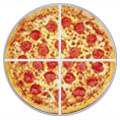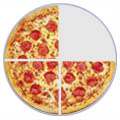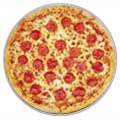|
home | what's new | other sites | contact | about |
|||||||||||||||||||||||||||||
|
Word Gems exploring self-realization, sacred personhood, and full humanity
Editor’s collection of notes: Pre-Algebra Fraction, Proper and Improper
return to "mathematics:notes" main-page
from https://www.mathsisfun.com/improper-fractions.html
An Improper Fraction has a top number larger than (or equal to) the bottom number. More Examples
See how the top number is bigger than (or equal to) the bottom number That makes it an Improper Fraction.
Three Types of FractionsA Fraction (such as 7/4) has two numbers: Numerator Denominator The top number (the Numerator) is the number of parts we have. Example: 7/4 means:
So we can define the three types of fractions like this:
So an improper fraction is a fraction where the top number (numerator) is greater than or equal to the bottom number (denominator): it is top-heavy.
Can be EqualWhat about when the numerator is equal to the denominator? For example 4/4 ? Well it is the same as a whole, but it is written as a fraction, so most people agree it is a type of improper fraction. We can use either an improper fraction or a mixed fraction to show the same amount. For example 1 3/4 = 7/4, as shown here:
|
|||||||||||||||||||||||||||||
|
|



